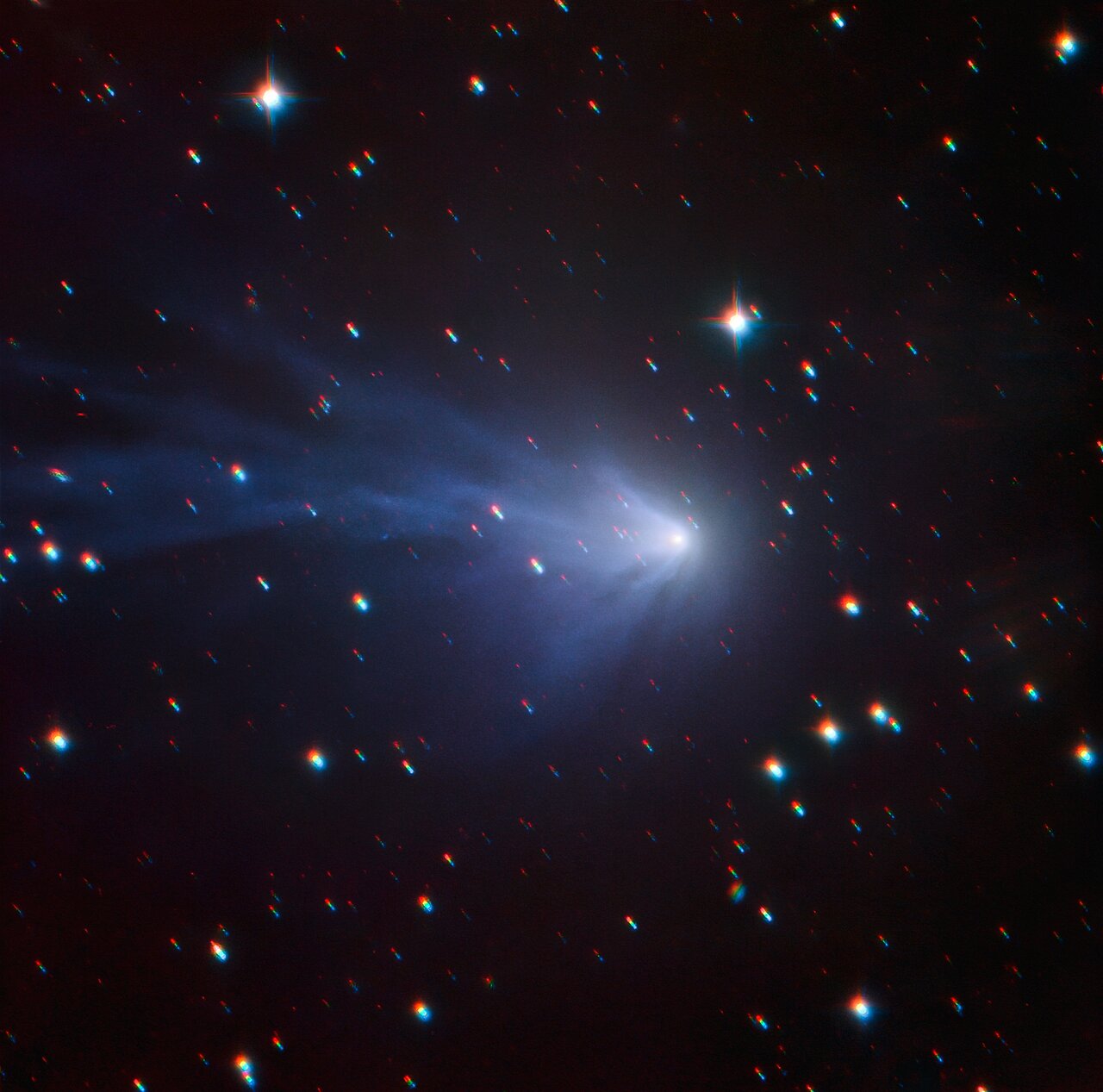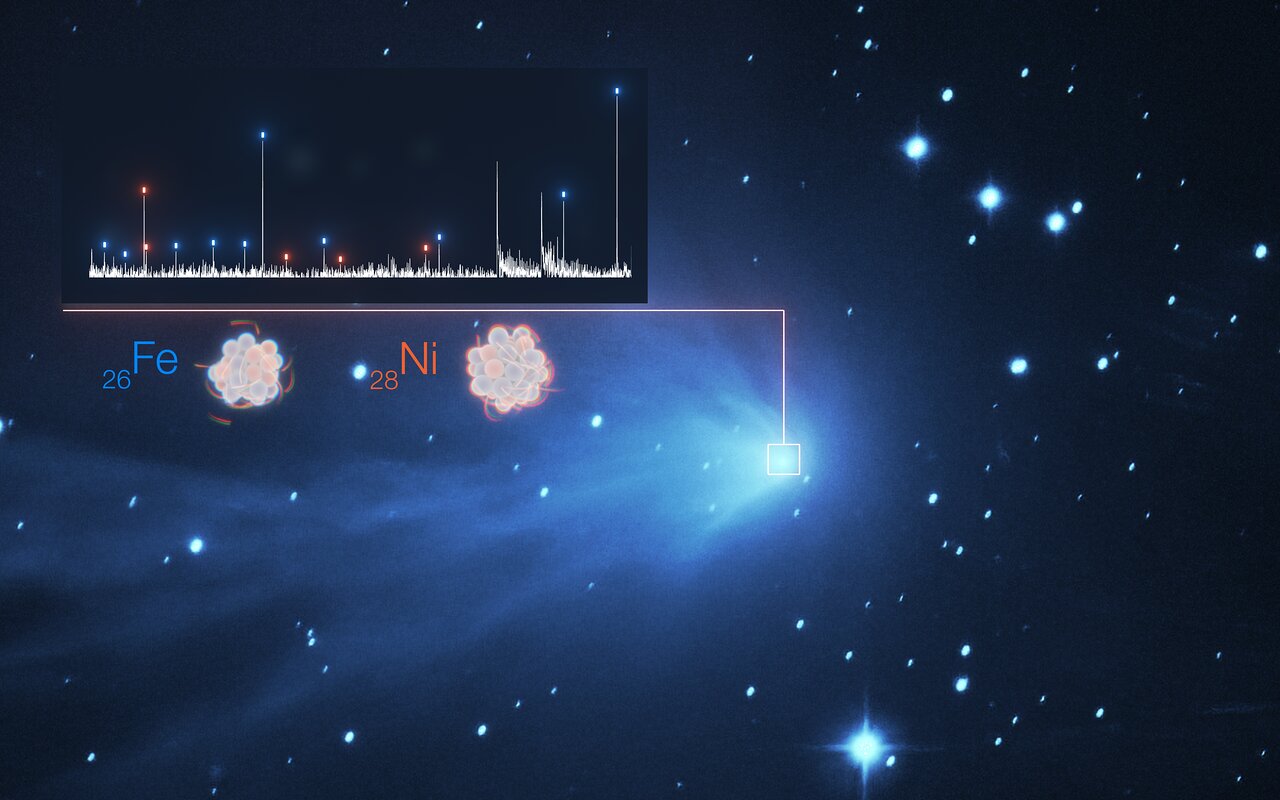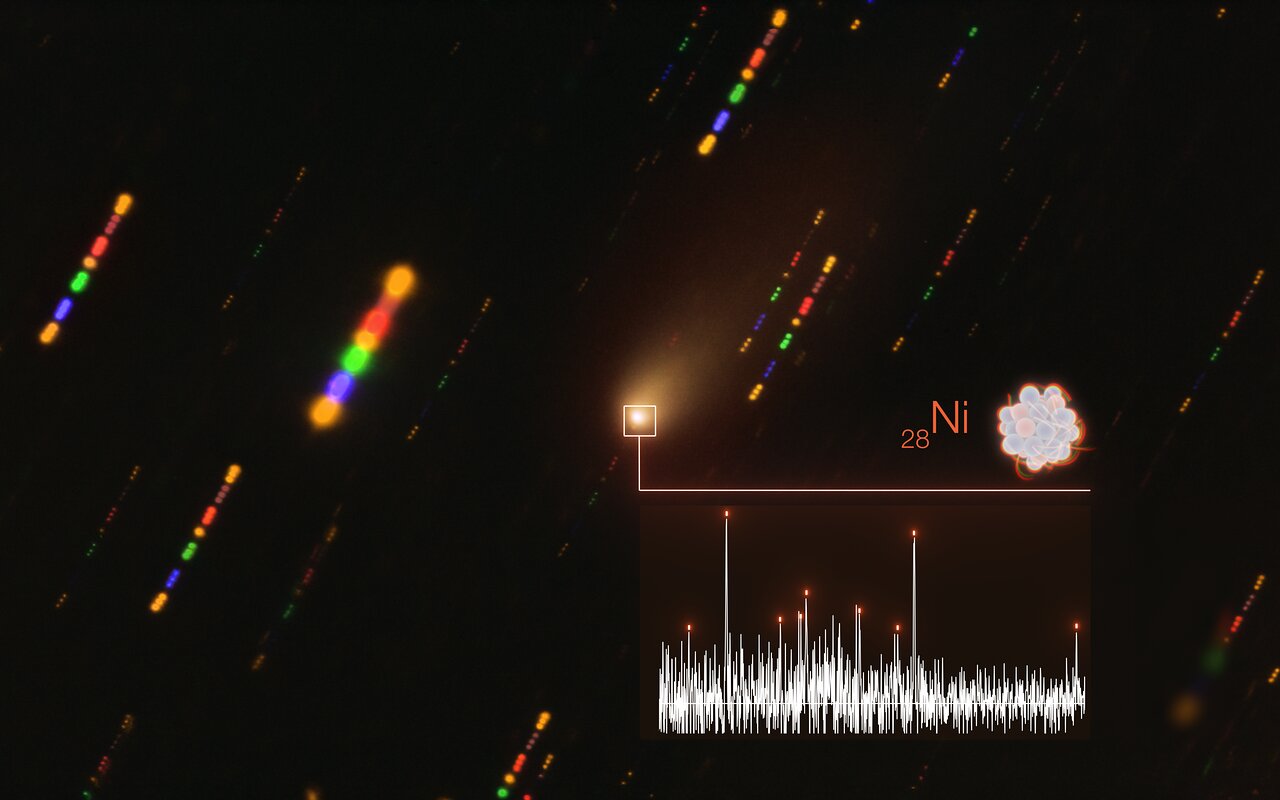Metals found in the atmospheres of comets in and beyond our solar system surprise scientists
Metal atoms have surprisingly been discovered in the frigid atmosphere of the first known interstellar comet to visit our solar system, a new study finds.
Astronomers have also detected metal in the cold haloes surrounding comets local to the solar system, which suggest our solar system comets and the interstellar visitor may have similar origins, researchers add.
Comets, which are made up of dust and ice left over from planetary formation, could yield key clues to the chemistry of early planetary systems. Scientists often deduce the composition of comets by examining the clouds of gas and dust known as comas that surround the hearts of comets.
Video: Comets in our solar system surprisingly emit heavy metal vapors
Related: Future interstellar comet? Gas-spewing object spotted in asteroid group near Jupiter

Scientists typically do not detect metals such as nickel in the comas of comets, since their surfaces are usually too cold for metal to vaporize. Exceptions to this rule are comets passing near or plunging into the sun, when temperatures can readily exceed the 800 degrees Fahrenheit (425 degrees Celsius) needed for nickel vapor to form.
Now scientists have detected nickel atoms in the coma of the first known interstellar comet, 2I/Borisov. First discovered in 2019, its speed and trajectory revealed it was a rogue comet from interstellar space, making it the first known interstellar comet and the second known interstellar visitor after the pancake-shaped shape rock 1I/'Oumuamua.
The discovery was unexpected — when astronomers first saw these nickel atoms in January using the Very Large Telescope in Chile, 2I/Borisov was far from the sun, with an estimated temperature of minus 135 degrees F (minus 93 degrees C). They detailed their findings in the May 20 issue of the journal Nature.
Get the Space.com Newsletter
Breaking space news, the latest updates on rocket launches, skywatching events and more!

In an independent study also appearing in the May 20 issue of Nature, astronomers discovered gaseous nickel and iron in the cold comas of about 20 solar system comets of many different types. The wavelengths of light from these metals they detected using the Very Large Telescope were hidden in plain sight, mingled among the spectrum of light from other molecules in the comas.
The amount of iron and nickel these comets released was small — only about 1 gram per second, compared with the roughly 220 lbs. (100 kilograms) of water per second the comets produced. Coincidentally, the amount of nickel these comets each produced per second was almost exactly the nickel content of a U.S. five-cent coin, or nickel.
"Usually there is 10 times more iron than nickel, and in those comet atmospheres we found about the same quantity for both elements," Damien Hutsemékers, a researcher with the University of Liège and co-author of the study, said in a statement. "We came to the conclusion they might come from a special kind of material on the surface of the comet nucleus, sublimating at a rather low temperature and releasing iron and nickel in about the same proportions."

As to why astronomers overlooked metal atoms in these cometary atmospheres even though the spectrums of light from many of them were visible for the past 20 years, "probably, until now, none of the observers who saw these spectral signatures of nickel or iron could even imagine that gaseous metals might be present in such a cold environment, and left them unidentified," Piotr Guzik, an astronomer at Jagiellonian University in Kraków, Poland, who co-authored the study concerning 2I/Borisov, told Space.com.
It remains uncertain how all these comets can generate metal at such cold temperatures. One possibility is that harsh ultraviolet light from the sun might break apart nickel-containing molecules in the comets.
All in all, "the fact that even such a minor constituent as nickel is present both in the coma of interstellar comet Borisov and comets observed in the solar system suggests similar conditions at the time and place of their birth," Guzik said.
Follow Charles Q. Choi on Twitter @cqchoi. Follow us on Twitter @Spacedotcom and on Facebook.
Join our Space Forums to keep talking space on the latest missions, night sky and more! And if you have a news tip, correction or comment, let us know at: community@space.com.

Charles Q. Choi is a contributing writer for Space.com and Live Science. He covers all things human origins and astronomy as well as physics, animals and general science topics. Charles has a Master of Arts degree from the University of Missouri-Columbia, School of Journalism and a Bachelor of Arts degree from the University of South Florida. Charles has visited every continent on Earth, drinking rancid yak butter tea in Lhasa, snorkeling with sea lions in the Galapagos and even climbing an iceberg in Antarctica. Visit him at http://www.sciwriter.us









